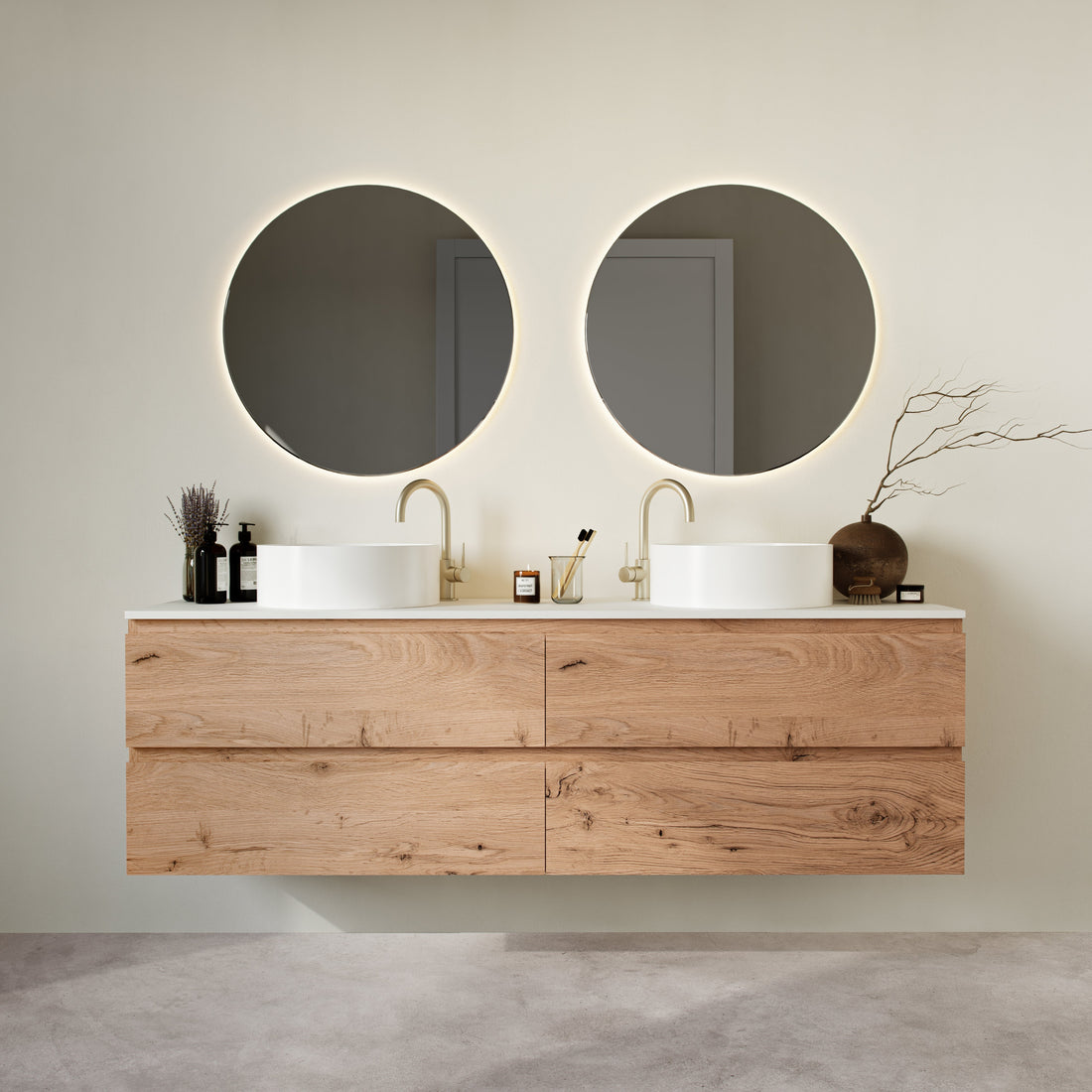Wall Hung vs Floor Standing Bathroom Vanity: Which Is Better?
When renovating or building a bathroom, one of the key decisions homeowners face is whether to go with a wall hung or floor standing bathroom vanity. While both styles serve the same basic function, they offer different benefits, aesthetics, and practical considerations. And with the bathroom being one of the most used spaces in a home, getting this choice right can have a lasting impact on daily comfort and long-term value.
If you find yourself weighing the pros and cons, you’re not alone. Many homeowners in New Zealand and beyond struggle with choosing the right bathroom vanity style, especially with the growing range of modern designs now available. In this article, we’ll break down the real differences between wall mounted and floor mounted bathroom vanities, why more homeowners are leaning toward wall hung designs, and how to choose the best option for your space.
What is a Wall Hung Bathroom Vanity?
A wall hung bathroom vanity, also known as a floating vanity, is mounted directly to the wall and sits above the floor, creating a minimalist, modern appearance.
Benefits of Wall Hung Bathroom Vanities:
-
Creates the illusion of more space: The visible floor underneath can make small bathrooms feel larger and airier.
-
Easier to clean underneath: No need to bend around baseboards or corners – a mop or vacuum glides right underneath.
-
Modern design appeal: Wall hung units are a popular choice in contemporary bathrooms and can increase aesthetic value.
-
Customizable height: Since the vanity is wall mounted, it can be positioned to best suit your family’s comfort and needs.
🛒 Explore Our Wall Hung Bathroom Vanities
Considerations:
-
Wall strength is critical: These bathroom vanities require sturdy wall framing for secure installation.
-
Storage may be more compact: While not necessarily limited, floating vanities usually focus on sleek, efficient storage rather than bulk.
What is a Floor Standing Bathroom Vanity?
A floor standing bathroom vanity rests directly on the floor and is the more traditional style found in many homes. These vanities can be simple and functional or highly decorative depending on the design.
Benefits of Floor Standing Bathroom Vanities:
-
More storage capacity: These units typically offer more drawers and cupboard space for toiletries, cleaning supplies, and linens.
-
Easier installation: No wall mounting is required, making it ideal for renovations or DIY installations.
-
Variety in design styles: From classic timber finishes to modern matte, you’ll find a broader range of designs and price points.
Considerations:
-
Takes up visual space: In smaller bathrooms, a floor bathroom vanity may make the room feel more crowded.
-
Harder to clean around: Dust and hair can collect around the base, especially in tight corners or against walls.
-
Less modern appeal: For homeowners looking to create a sleek, contemporary bathroom, floor vanities may feel bulky or outdated.
Why More People Are Choosing Wall Hung Bathroom Vanities
With urban living spaces getting tighter and minimalist design trends on the rise, wall hung bathroom vanities are quickly becoming the go-to option for homeowners and designers alike. They not only make a room look more open and refined, but also offer practical benefits that make daily routines easier and cleaning a breeze.
For New Zealand homes in particular—where quality design and space optimization matter—wall hung vanities provide the perfect balance of function and form.
🛒 Explore Our Modern Wall Hung Bathroom Vanity Collection
How to Choose the Right Bathroom Vanity for Your Space
Making the right choice between a wall hung or floor standing bathroom vanity depends on several factors:
1. Bathroom Size and Layout
-
In compact bathrooms, wall hung vanities help open up the floor space visually.
-
Larger bathrooms can accommodate floor standing vanities, but a floating vanity still adds a cleaner, more modern touch.
2. Storage Needs
-
If you need ample storage, a floor bathroom vanity offers more volume.
-
For smart, streamlined storage, a well-designed wall hung vanity can meet most everyday needs without the bulk.
3. Style Preference
-
Modern, minimalist homes tend to favor wall mounted bathroom vanities.
-
Traditional or rustic homes often pair better with floor standing units.
4. Installation and Renovation Scope
-
Wall hung vanities may require reinforcing walls, which adds cost and time.
-
Floor bathroom vanities are simpler to install, but come at the cost of flexibility and aesthetic appeal.
Common Questions About Bathroom Vanity Styles
Do wall hung bathroom vanities really save space?
Yes, visually they create more open floor space and make bathrooms appear larger, especially when paired with light wall colours and large mirrors.
Can I switch from a floor bathroom vanity to a wall hung one?
Yes, but it may require plumbing adjustments and reinforcement of the wall. Consult a professional if you’re not sure what your walls can handle.
What’s the standard height for installing a wall hung bathroom vanity?
Typically around 850-900mm from the floor to the top of the basin, but it can be adjusted based on user height and design preference.
Final Thoughts
While both wall hung and floor standing bathroom vanities have their advantages, wall hung options are gaining popularity for good reason. They offer a sleek, space-saving design, make cleaning easier, and lend a modern feel that’s ideal for today’s homes.
If you're aiming for a bathroom that feels open, stylish, and functional, a wall hung bathroom vanity is the clear choice.
🛒 Explore Floating Bathroom Vanities at ALIK
Looking for more tips like this? Check out our latest Blog Posts.





